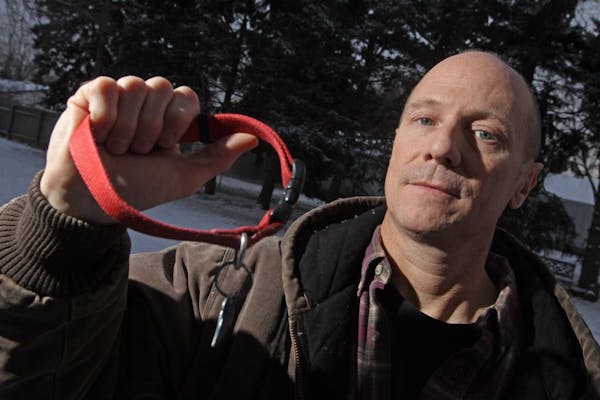The deaths of at least six dogs caught in body-gripping traps since fall has prompted two Minnesota lawmakers to introduce legislation to restrict their use.
And Department of Natural Resources officials say they plan to meet with trapping groups and others to try to develop regulations to prevent dogs from being accidentally caught in the body-gripping traps.
"We've been getting a lot of e-mails from dog owners who are concerned about these traps," said Ed Boggess, DNR fish and wildlife director. "We intend to work with the Legislature and various interests to come up with new regulations that would prevent dogs from being able to get into these traps."
But any proposal to tighten trapping regulations is a lightning rod for controversy, and it's uncertain whether trappers, dog owners and legislators will be able to find middle ground. Or, even if they do, whether legislation will pass.
"I don't think there is appetite at the Legislature to make any changes," said Rep. Tony Cornish, R-Good Thunder, a former DNR conservation officer. "We can't solve all the world's problems with over-regulation."
A bill to be introduced Wednesday by Rep. John Ward, DFL-Brainerd, and Sen. Chuck Wiger, DFL-Maplewood, would require body-grip traps, also known as Conibear traps, to be set at least 5 feet above the ground or be completely submerged in water or be placed "in a manner" that would prevent a dog from being trapped.
"I'm very concerned about the deaths of dogs that have occurred," Wiger said. "The goal is to allow the traps to continue to be used but to prevent the accidental trapping of dogs."
But Con Christianson, a trapper and legislative liaison for the Minnesota Trappers Association, said requiring the traps to be 5 feet off the ground would make them useless to trappers seeking bobcats and raccoons.
"There would be problems for trappers," said Christianson, whose group hasn't taken a formal position on the legislation. "There are a lot of traps out there, and the number of incidents are very, very few, so what would you be fixing?"
Said Cornish: "People should realize a restriction like this basically knocks out trapping raccoons, which is a terrible pest for our waterfowl."
Any such bill would have to go through the House Energy, Environment and Natural Resources committee, chaired by Rep. Denny McNamara, R-Hastings.
"I'm not ready to give it a hearing," McNamara said Friday. "If there would be any changes in trapping regulations, I would like the DNR, trappers and interest groups to come to an agreement first."
Boggess said the DNR will attempt to do that. He said restrictions could be imposed requiring the openings on such traps to be reduced in size so some dogs wouldn't fit in the traps.
"Other states that have done it have seen a significant decline in incidents of dogs getting caught in the traps," Boggess said.
But Christianson said those trapping methods would make it difficult to catch bobcats.
The DNR is meeting with trapping groups on Feb. 11 to discuss the dog issue and others.
Meanwhile, Cornish said few dogs are caught in traps. "I think they should just accept it as one of those unfortunate things," he said.
John Reynolds, a hunter and trapper from Merrifield, Minn., whose dog, Penni, was killed last fall by a body-grip trap, isn't willing to do that. He's pushing for a requirement that body-grip traps not be placed on the ground.
Reynolds is skeptical that modifications can be made to prevent a body-grip trap placed on the ground from accidentally catching a dog.
"That modification may minimize the number of dogs killed, but Penni is dead because regulations were changed to 'minimize' the number of dogs killed," he said in a letter to DNR officials.
"No one should be required to play roulette with their dog to hunt grouse or pheasant."

